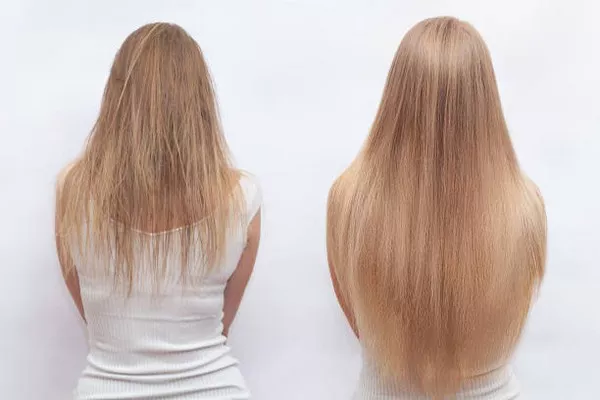Chemical straightening is a popular method for transforming curly hair into a sleek, straight style. This process involves the use of chemicals to alter the hair’s natural structure, providing a long-lasting straight look. In this article, we’ll explore various aspects of chemical straightening, including methods, products, maintenance, and potential risks. This guide aims to provide an in-depth understanding to help you make informed decisions.
Understanding Chemical Straightening
What is Chemical Straightening?
Chemical straightening involves using products that break the natural bonds in the hair shaft and reform them to achieve a straighter texture. The process typically includes:
Application of a Straightening Solution: This solution breaks the disulfide bonds in the hair.
Rinsing and Neutralizing: After the solution has worked, it’s rinsed out, and a neutralizer is applied to re-bond the hair in its new straight form.
Blow-Drying and Flat-Ironing: The hair is blow-dried and flat-ironed to lock in the straight style.
Types of Chemical Straightening
Relaxers: These are strong chemical treatments used primarily for Afro-textured hair to make it permanently straight.
Keratin Treatments: These treatments use keratin to smooth and straighten the hair temporarily, typically lasting for several months.
Japanese Hair Straightening: This method uses a combination of chemicals and heat to permanently straighten the hair.
Choosing the Right Method
1. Relaxers
Overview
Relaxers are strong chemicals that permanently straighten hair by breaking and reforming disulfide bonds.
Pros
Long-lasting Results: Results can last until the hair grows out.
Suitable for All Hair Types: Especially effective for very curly or Afro-textured hair.
Cons
Potential Damage: Can cause significant damage if not used correctly.
Maintenance Required: Regular touch-ups needed for new growth.
Recommendations
Choose a Professional: It’s crucial to have a professional apply relaxers to minimize damage.
Pre-Treatment: Use a deep conditioner before the treatment to protect hair health.
2. Keratin Treatments
Overview
Keratin treatments involve applying a keratin-based solution to the hair and then sealing it with heat.
Pros
Less Damage: Generally less damaging compared to relaxers.
Natural Appearance: Leaves the hair looking shiny and smooth.
Cons
Temporary: Effects typically last between 3 to 6 months.
Formaldehyde: Some treatments contain formaldehyde, which can be a health concern.
Recommendations
Choose Formaldehyde-Free Products: To avoid potential health risks.
Regular Maintenance: Use sulfate-free shampoos to prolong the effects.
3. Japanese Hair Straightening
Overview
This method uses chemicals to break the bonds in the hair and heat to reform them in a straight pattern.
Pros
Permanent Results: Provides a long-lasting straight effect.
Effective for All Hair Types: Works well for various hair textures.
Cons
High Maintenance: Requires careful post-treatment care.
Potential Damage: Can be damaging if not applied correctly.
Recommendations
Consult a Specialist: Have the procedure done by an experienced professional.
Post-Treatment Care: Follow all aftercare instructions to maintain hair health.
Preparing for Chemical Straightening
Hair Health Assessment
Before undergoing any chemical straightening treatment, assess the health of your hair. Chemically treated hair should be in good condition to avoid excessive damage. Look for signs such as:
Breakage: Hair that breaks easily may not withstand chemical treatments.
Dryness: Extremely dry hair may become even more brittle after treatment.
Scalp Health: A healthy scalp is essential for the success of chemical straightening.
Choosing the Right Products
Selecting high-quality products is crucial for minimizing damage and achieving the best results. Here’s what to look for:
Ingredients: Opt for products with conditioning and nourishing ingredients.
Reputation: Choose products from reputable brands with positive reviews.
Professional Consultation
Consult a hair care professional to determine the best method for your hair type and condition. A professional can provide personalized advice and ensure the treatment is applied correctly.
See Also: How To Make Super Curly Hair Straight
The Chemical Straightening Process
Relaxer Application
Preparation: Protect the scalp and hairline with a barrier cream.
Application: Apply the relaxer evenly throughout the hair.
Processing Time: Allow the relaxer to process according to the manufacturer’s instructions.
Neutralizing: Rinse out the relaxer and apply a neutralizing shampoo.
Keratin Treatment Application
Cleansing: Wash the hair with a clarifying shampoo to remove impurities.
Application: Apply the keratin solution evenly to damp hair.
Blow-Drying: Blow-dry the hair using a brush to ensure even application.
Flat-Ironing: Use a flat iron to seal the keratin into the hair.
Japanese Hair Straightening Process
Application of Solution: Apply the straightening solution and allow it to process.
Rinsing and Drying: Rinse the solution out and blow-dry the hair.
Heat Application: Use a flat iron to straighten the hair.
Neutralizing: Apply a neutralizer to lock in the straight style.
Post-Treatment Care
Hair Maintenance
Avoid Heat: Limit the use of additional heat styling tools to prevent further damage.
Hydration: Use moisturizing conditioners and hair masks to keep the hair hydrated.
Gentle Products: Choose shampoos and conditioners that are sulfate-free and designed for chemically treated hair.
Regular Touch-ups
For treatments like relaxers and Japanese straightening, regular touch-ups are needed to maintain the straight look. This involves applying the treatment to new hair growth and can be scheduled every 6-8 weeks, depending on hair growth.
Risks and Considerations
Potential Risks
Hair Damage: Chemical straightening can lead to dryness, breakage, and overall damage if not done properly.
Scalp Irritation: Chemicals used in the process can cause scalp irritation or burns.
Allergic Reactions: Always conduct a patch test before applying any chemical treatment.
Mitigating Risks
Professional Application: Have treatments performed by trained professionals.
Patch Test: Test products on a small area of skin to check for allergic reactions.
Follow Instructions: Adhere strictly to product instructions and post-treatment care guidelines.
Conclusion
Chemical straightening offers a way to achieve smooth, straight hair with various methods available to suit different hair types and preferences. From relaxers to keratin treatments and Japanese straightening, each method has its benefits and considerations. By understanding the process, preparing adequately, and taking care of your hair post-treatment, you can enjoy a sleek, straight look while minimizing potential damage.
Make informed decisions and consult professionals to ensure the best results for your hair type. With proper care and maintenance, chemical straightening can provide a beautiful, long-lasting transformation.


